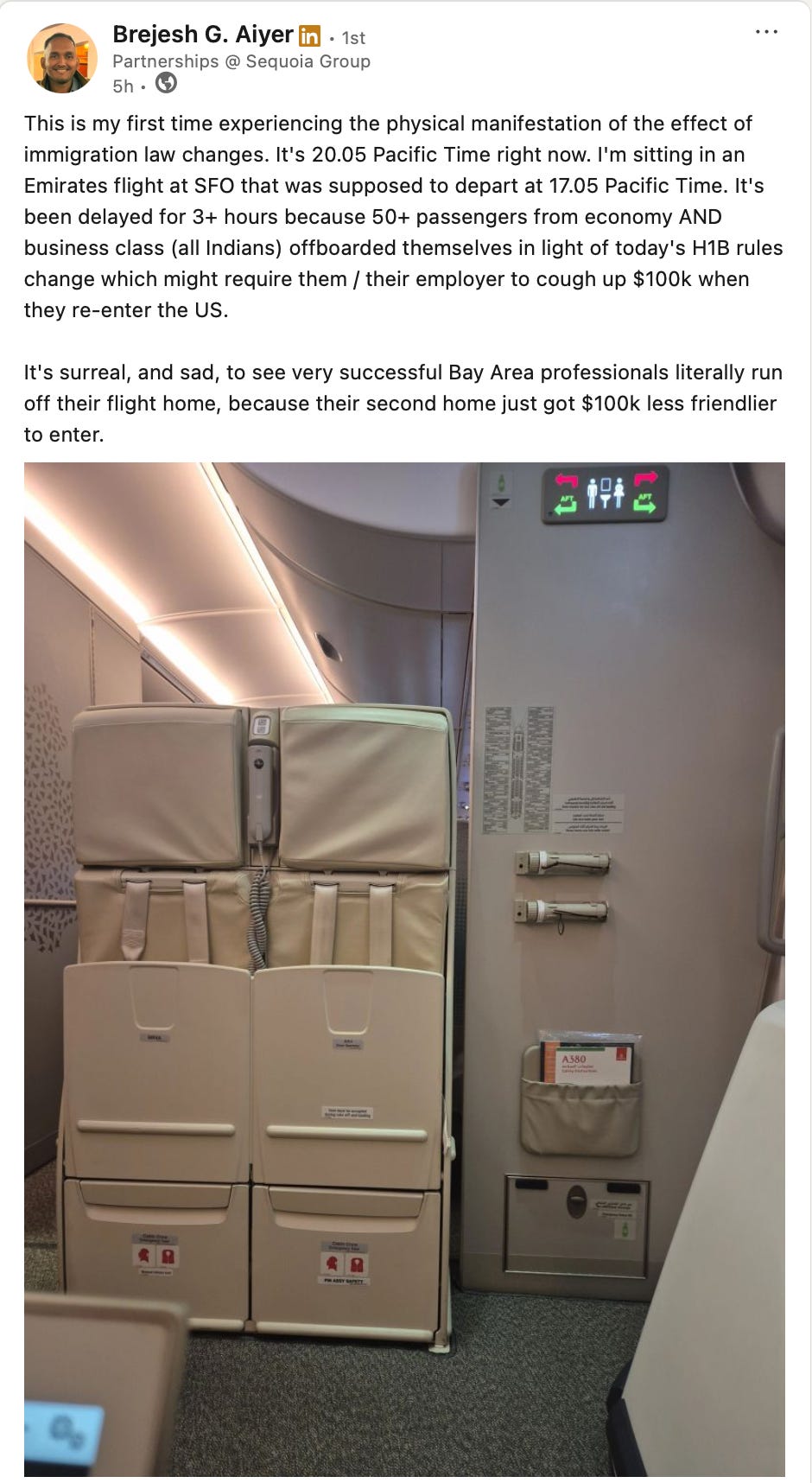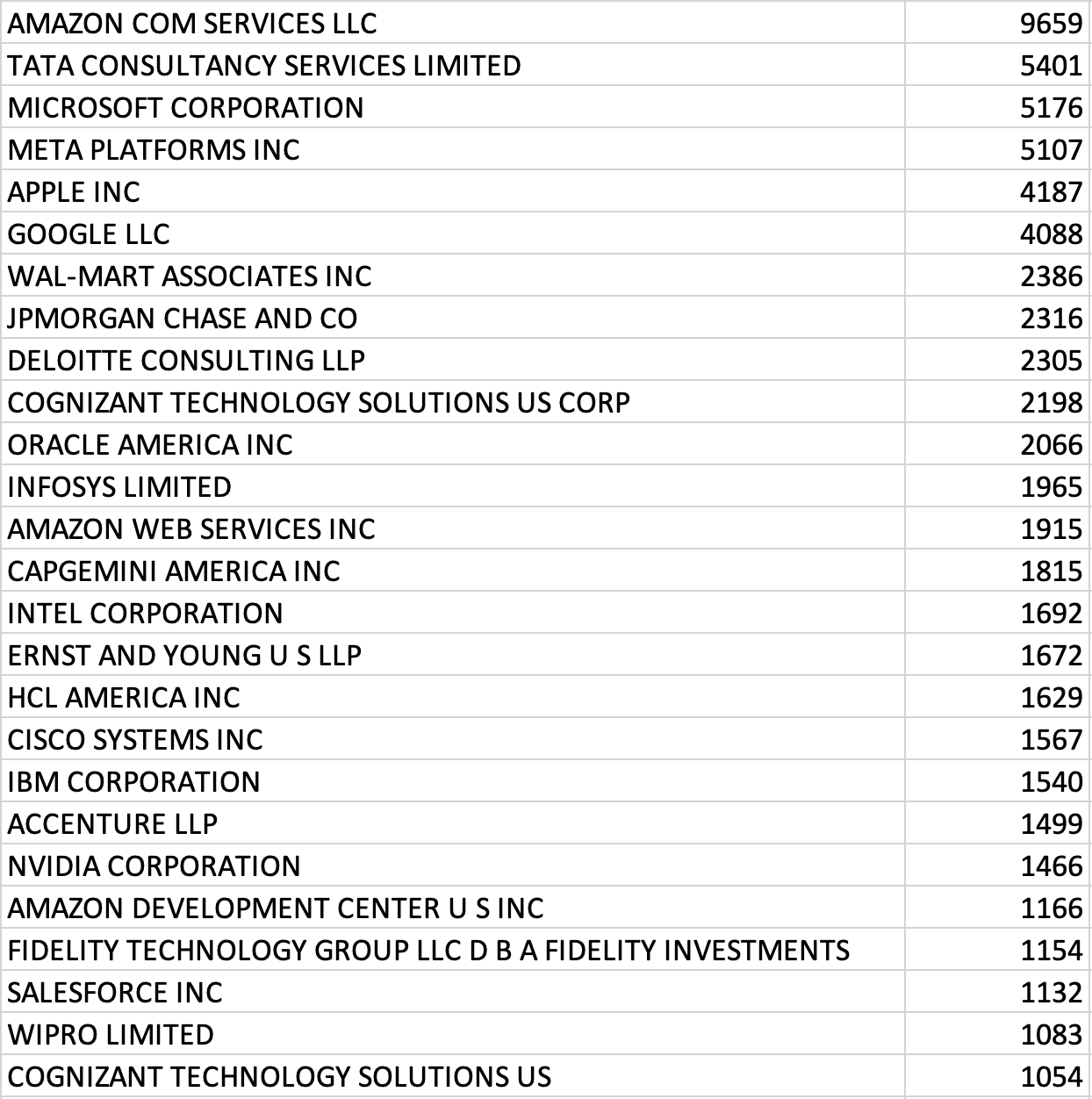$100,000 Self Goal
Building a system that works for your country takes decades, apparently can be destroyed in a matter of weeks.
The real repercussions of the $100,000 H1B are not really known, but in the meantime, people are jumping out of the plane!
The CEOs running Microsoft and Google once upon a time went to the US using H1B visas to work as mere engineers at these companies. They rose and became what they are today.
According to USCIS Data, there are a total of 304,124 active H1B visas in the US. The top 27 of them account for about 67,000 of those Visas and represent almost 20% them. You can visit the link above and play around with all kinds of filters.
Every year, 85,000 H1B visas are issued, and of them, 71% are issued to Indians.
There are two stories here. One is that American companies benefit immensely from the talent that they can recruit from overseas. Countries in Asia contribute a large talent pool to those companies, and many of them graduate through the American education system to get into these jobs. India alone sends over 300,000 students each year to the US. Most of them go to the US hoping to get a job there; the cost would never add up otherwise.
The question to ask is, would Amazon be willing to cough up $100,000 to recruit a fresh graduate into the company? I doubt it. In the absence of those jobs, will those students even end up in the US?
The University Town
Say, an international student spends about $40,000 a year on everything other than tuition each year, this single shift would put $12 billion in student consumption under peril. The sandwich shop owner who sells sandwiches to some of these kids in a university town then goes and buys stuff for his family, and so on. The second-order and third-order consumption that this spurs on would probably take the figure much higher.
Apart from this, they spend hundreds of thousands of dollars on tuition that is also at peril!
The US has over 1.1 million international students. Do the math.
Indian Service Story
Then comes the story of the service companies on the list above. TCS, Infosys, Cognizant, Wipro, Accenture; all these companies can render the service that they do in the US because of their on-site engineers who work at the client’s offices. They will no longer be able to cater in this manner since the software services business is essentially a margins game. There is no room for $100,000 visa fees.
As it is, many of the companies that used to outsource have wizened and have started setting up their own Global Capacity Centres in various countries, including India. This is going to see an acceleration.
Also, engineering graduates started working at these companies (Infosys, TCS) at salaries lower than those paid to waiters at restaurants, in the hope that one day they would get an on-site engagement, would need to start rethinking.
Finally,
There is a conveyor belt that takes students from India to the US, and these students HAVE to get jobs in the US. At Indian salaries, they would not be able to pay back the student loans in a lifetime. If they are not going to get jobs, it makes no economic sense to go to the US. This policy will break the conveyor belt. A conveyor belt that was built over the past 5 decades.
Students who would have otherwise gone to the US will perhaps go to other countries or stay back in India. This will change the talent availability in the country and also the pace of innovation in a lot of places outside the US.



